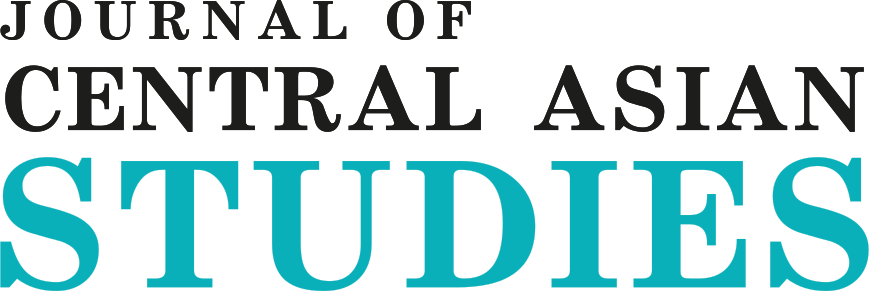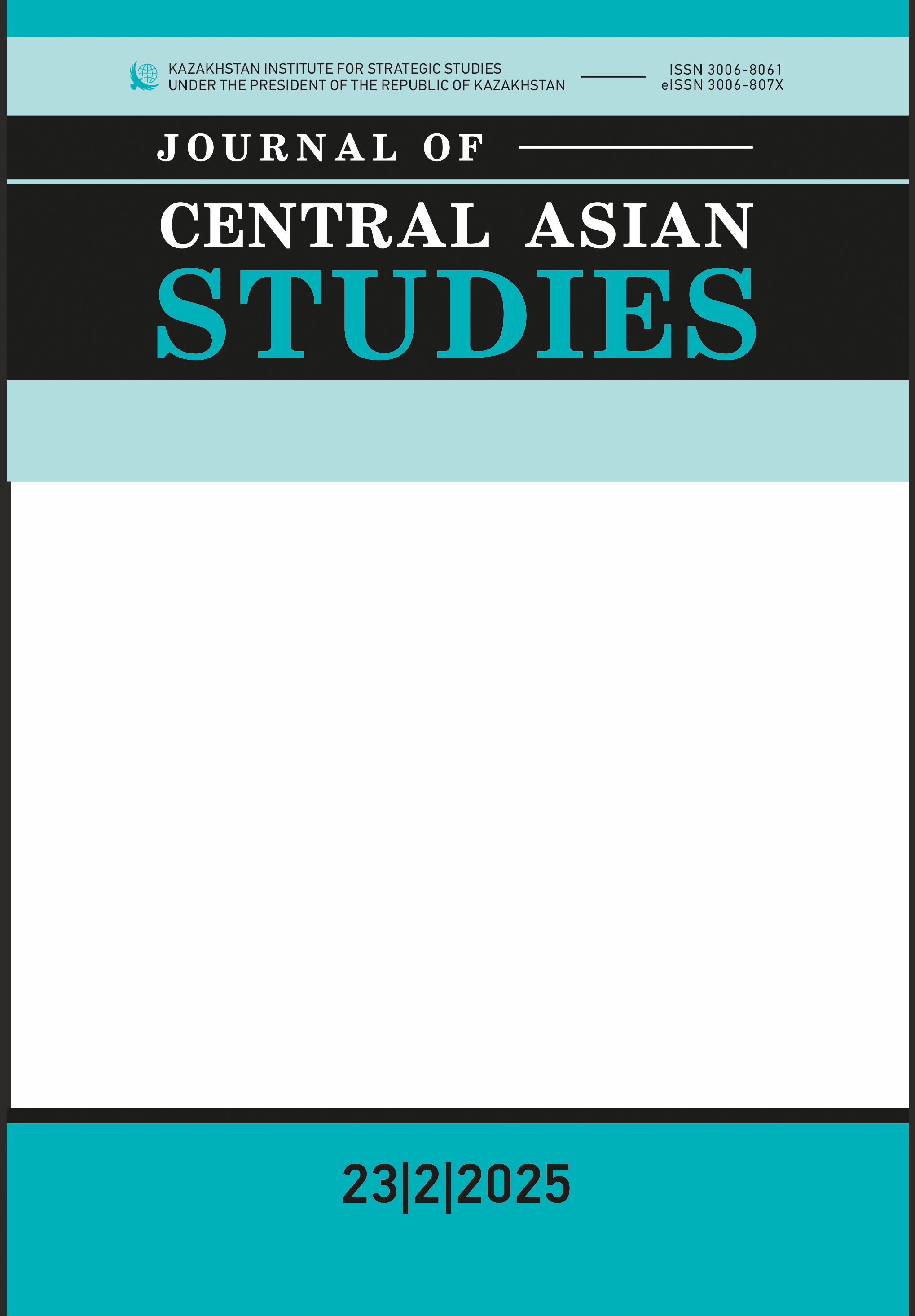The Political, Security, and Economic Implications of Contemporary Afghanistan for Central Asia
DOI:
https://doi.org/10.52536/3006-807X.2025-2.001Keywords:
Afghanistan, Central Asia, connectivity, economic cooperation, governance, regional security, spillover, TalibanAbstract
In the wake of the Islamic Emirate's reestablishment in 2021, Afghanistan has encountered profound political unrest, heightened security issues, and a downturn in its economy. While these complications are primarily internal, their repercussions extend into Central Asia. This article examines Afghanistan's contemporary state through the lens of its neighboring Central Asian nations, including Uzbekistan, Tajikistan, Kazakhstan, and Turkmenistan. It explores the perceived threats and emerging opportunities for strengthening economic and diplomatic relations, drawing on regional policy analyses, strategic documents, and security evaluations. The study argues that Afghanistan's geopolitical relevance to Central Asia has an underlying current, highlighting the necessity for a nuanced policy approach that balances risk management with proactive collaboration.
References
Asian Development Bank. (2022a). The Central Asia Regional Economic Cooperation (CAREC) Program: Vision 2030. https://www.adb.org.
Asian Development Bank. (2022b). Central Asia Regional Economic Cooperation: Corridor performance assessment. https://www.adb.org.
Asian Development Bank. (2022c). TAPI pipeline and regional infrastructure: Strategic assessments. https://www.adb.org.
Barfield, T. (2023). Afghanistan’s legal and political order: Continuity and change under the Taliban. Harvard University Press.
Brown, M. E. (2006). The rise of geopolitical spillovers in weak states. Journal of International Affairs, 59(2), 45–67.
Brown, A. (2022). Trade corridors and regional cooperation in post-conflict states: The Afghan case. Brookings Institution Press.
Buzan, B., & Wæver, O. (2003). Regions and Powers: The Structure of International Security. Cambridge University Press.
Crisis Group. (2021). Afghanistan and Central Asia: Building regional response frameworks. International Crisis Group. https://www.crisisgroup.org.
Doe, J. (2023). Diplomacy and regional integration: Central Asia’s evolving strategy toward Afghanistan. Journal of Asian Regional Affairs, 12(1), 45–67.
Eurasian Drug Monitoring Initiative. (2025). Annual Report on Drug Trafficking in Central Asia.
Giustozzi, A. (2023). The Taliban and Local Governance: Informal Authority and State-Building in Afghanistan. Hurst.
Green, L. (2023). Counterterrorism through cooperation: The future of regional security in Central Asia. International Security Review, 28(2), 88–104.
Human Rights Watch. (2022). Central Asia: Limited refugee protection for Afghans. https://www.hrw.org.
International Crisis Group. (2022). Taliban rule at one year: Afghanistan’s bleak outlook. International Crisis Group.
International Crisis Group. (2023). Taliban governance at two years: Assessing the new status quo. https://www.crisisgroup.org.
Jones, S. G. (2020). Afghanistan’s insurgency and regional security architecture. RAND Corporation. https://www.rand.org.
Kassenova, N. (2022a). Regional diplomacy and engagement strategies in Afghanistan. Carnegie Endowment for International Peace.
Kassenova, N. (2022b). Uzbekistan’s balancing act in Afghanistan. Carnegie Endowment for International Peace. https://carnegieendowment.org.
Kassenova, N. (2022c). Uzbekistan’s pragmatic regionalism in the Afghan context. Carnegie Endowment for International Peace. https://carnegieendowment.org.
Khan, M. A. (2021). Islamic governance and international norms: The Taliban and multilateral engagement. Middle East Policy Journal, 28(3), 34–50.
Koehler, J., & Zürcher, C. (2023). Tajikistan’s strategic dilemma in post-U.S. Afghanistan. Central Asian Affairs, 10(1), 32–51.
Lee, C. (2021). From isolation to integration: Taliban rule and the regional response. Central Asia Policy Studies, 7(4), 99–115.
Lemon, E. (2022). Turkmenistan’s quiet diplomacy and the Taliban. Central Asia Program, George Washington University.
RFE/RL. (2021). Central Asia’s authoritarian regimes use the Afghan threat to consolidate power. Radio Free Europe/Radio Liberty. https://www.rferl.org.
Smith, H. (2022). Afghanistan’s shifting foreign policy under Taliban control. Cambridge University Press.
Smith, J. (2023). The impact of regional policies on refugee reintegration. Journal of Migration and Development, 12(3), 145–162. https://doi.org/10.1234/jmd.2023.04567.
SIGAR. (2023). Quarterly Report to the United States Congress. Special Inspector General for Afghanistan Reconstruction.
Tolipov, F. (2021). Tajikistan and Afghanistan: Shared history, diverging futures. Central Asian Journal of Security Studies, 8(1), 27–39.
UNDP. (2023a). Afghanistan Socioeconomic Outlook 2023. United Nations Development Programme.
UNDP. (2023b). Rule of Law in Fragile States.
UNDP. (2023c). Strengthening governance and the rule of law in fragile contexts: Afghanistan country report. https://www.undp.org
UNAMA. (2023). Human Rights in Afghanistan: Midyear Update. United Nations Assistance Mission in Afghanistan.
UNHCR. (2023). Afghanistan Situation Update. United Nations High Commissioner for Refugees.
United Nations Office on Drugs and Crime (UNODC). (2021). Afghanistan opiate trafficking and regional impact report. United Nations. https://www.unodc.org.
UN Security Council. (2023). Report on the threat posed by ISIL and Al-Qaida. United Nations.
UNODC. (2025). World Drug Report 2025. United Nations Office on Drugs and Crime.
World Bank. (2022). CASA-1000 and regional power integration prospects. https://www.worldbank.org.
World Bank. (2023). Afghanistan Development Update: Navigating Uncertainty. https://www.worldbank.org.
Downloads
Published
Issue
Section
License
Copyright (c) 2025 Zaland F.M.

This work is licensed under a Creative Commons Attribution 4.0 International License.











 Open content is licensed under the CC-BY
Open content is licensed under the CC-BY 